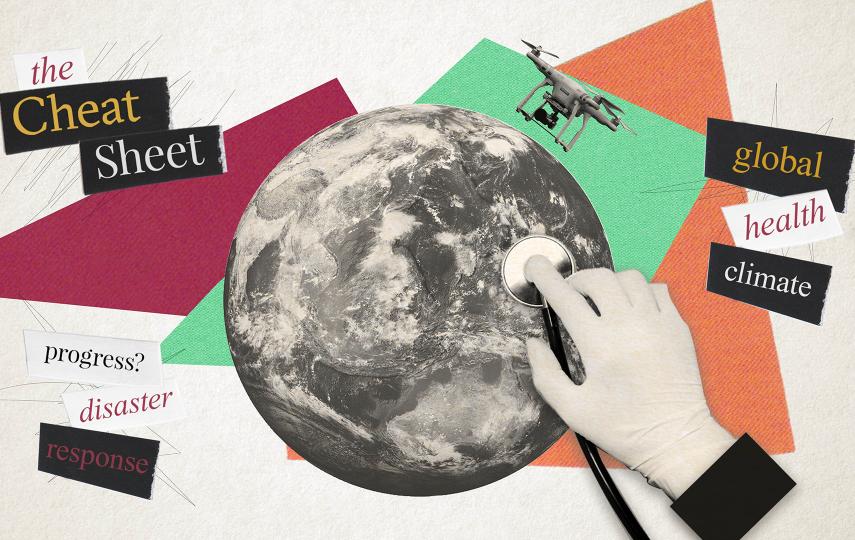Two months after floods caused by heavy tropical rains displaced hundreds of thousands of people in Pakistan’s Sindh and Balochistan provinces, shelter is the most urgent issue in the affected area, flood victims and aid workers say.
"Our lives have been ruined," Zarina, a flood victim, said. "We have nothing, not even clothes. It gets unbearably hot here and we don't have electricity most of the time. My little son is suffering and he can't get any medical attention."
Zarina is one of over 300 people who have been forced to seek shelter in a high school in the small town of Qamber in rural Sindh after floodwaters inundated their village destroying mud-houses and carrying away livestock in late June.
Almost 400 people were estimated to have been killed then, with over 2.5 million affected and close to 400,000 displaced by the floods.
According to an initial estimate by the National Disaster Management Authority (NDMA), over 35,000 people who were displaced by the floods now live in camps or makeshift shelters across the flood-affected region. However, with more rain having fallen, locals in both provinces say the number of people living in temporary shelters is much higher than the number quoted by the NDMA.
Most houses destroyed
Asif Khan, a regional social mobilisation specialist with the UN Human Settlements Programme (UN HABITAT) who toured the flood-affected districts in Balochistan soon after the deluge, told IRIN that nearly all the houses in the region had been destroyed by the floods.
"According to what we saw, nearly 80 to 90 percent of mostly mud-houses had been destroyed and, according to our estimate, nearly 50 percent of their livestock also perished. Agriculture is their main staple so they keep seeds stored for next year and so on, but even their storage facilities were inundated so they lost practically everything they had: houses, livestock, everything," Khan said.
 Photo: Adnan Sipra/IRIN  |
| Desperate locals in the Sindhi sub-district of K.N. Shah carry tents being distributed by a local NGO |
In Balochistan’s sub-district of Kona Tamba, people living in tents or simply sleeping out in the open on charpoys (local beds) - on higher ground alongside swamped fields - stared listlessly at an aid vehicle making its bumpy way across a dirt-track.
"We did a damage needs assessment soon after the disaster and we reported that the people here are facing very bad living conditions," Haji Imran, a field assistant with the Relief International non-governmental organisation (NGO), said.
"But the ground reality is that conditions for flood-refugees are even worse than we expected. They don't have enough tents, they don't have enough medication, they don't have clean drinking water and the heat makes it even tougher for them. They're really up against it," Imran said.
“Nothing to protect us from mosquitoes”
A few hundred miles away, in the Sindhi sub-district of K.N. Shah, an old woman struggled to balance a tent on her shoulder as she lagged behind two other women carrying similar burdens. A few men strode more briskly into the distance with more tents balanced on their shoulders. The tents were distributed by Sujag Sansar Organisation, a local NGO.
 Photo: Adnan Sipra/IRIN  |
| A K.N. Shah local points to a boat that makes its laborious way past a road that looks like it has been cut in half by rampaging floods |
Roads washed away
Problems for a population already under strain are compounded further by a badly hit road infrastructure: most roads in areas where the water still runs six to seven feet deep were ripped out of their foundations by rushing flood-waters. Now, locals say, villages situated further away from the main roads in Sindh’s Dadu District, one of the most badly affected areas, have been completely cut off for the past two months - and a lack of access for aid agencies and other NGOs means that essential food items and medical supplies cannot reach stranded villagers.
"I don't know if we'll be able to survive till the end of the year," a woman called Bushra said, as she prepared to climb aboard a boat that would take her across a 30-foot gap where a road had once been. "Our village hasn't received any help and people are dying. There are snakes everywhere and our village is surrounded by water."
as/at/ar/cb
This article was produced by IRIN News while it was part of the United Nations Office for the Coordination of Humanitarian Affairs. Please send queries on copyright or liability to the UN. For more information: https://shop.un.org/rights-permissions





